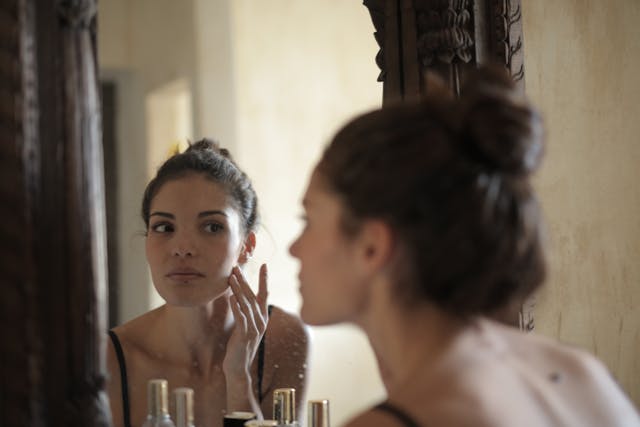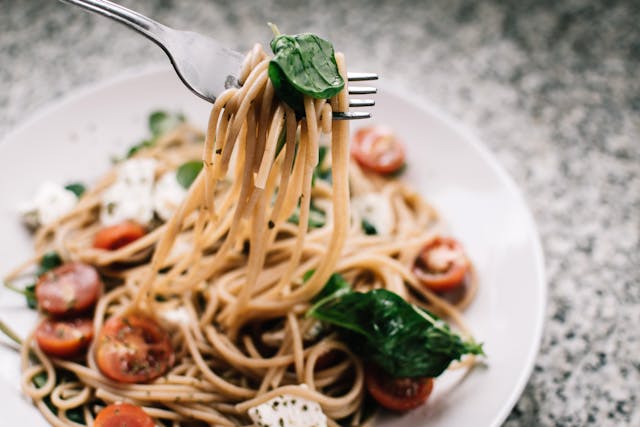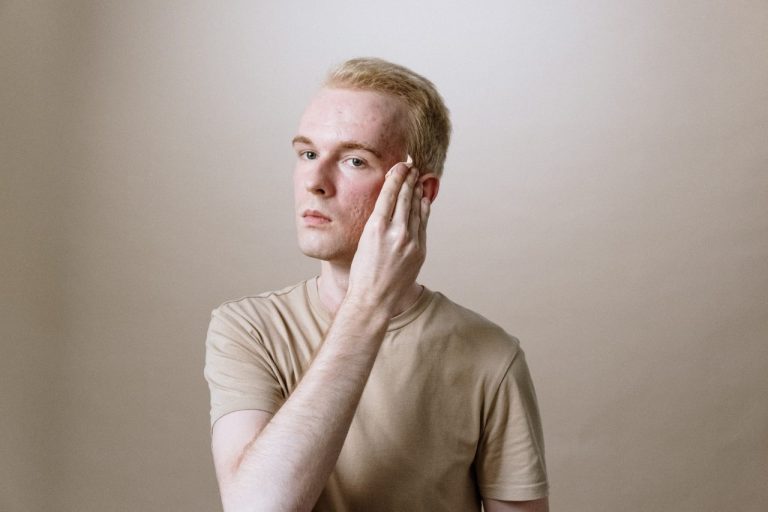Key takeaways
- Smoking speeds up skin aging process.
- Nicotine causes complexion changes, dullness.
- Skin healing impaired, blood flow reduced.
- Smoking increases risk of skin cancer.
- Quitting smoking improves skin over time.
We know smoking is bad for our health. Decades of research have proven that smoking is the leading risk factor for disease burden in Australia.
It is linked to 39 diseases, including 19 types of cancer, 7 types of cardiovascular disease, and chronic obstructive pulmonary disease.
Smoking impacts every organ in the body — including the skin. From speeding up the effects of aging to causing skin cancers, smoking can significantly impact the way our skin looks and functions.
Below, we look at the effects of smoking on the skin. We also break down why you might have developed bad skin after quitting smoking and explain what you can do about it.
Chat to a prescriber
Bulk-billed phone consultations
TGA-authorised clinicians
Nicotine vaping scripts available
Why Does Bad Skin Happen After Quitting Smoking?

Bad skin happens after quitting smoking because of your body’s dependence on nicotine and other dangerous chemicals from cigarette smoke.
Think of it this way: your body has an equilibrium of chemicals including nicotine. After you’ve quit smoking, nicotine leaves a void in the balance, which can tip things over and cause various reactions in your body.
As you go through nicotine withdrawal, the absence of nicotine and other cigarette chemicals may cause changes in your hormones and various aspects of your bodily functions, including your skin.
Hormonal changes also means your skin may throw off its oil balance. Natural oil in the skin, while essential, can cause sebum blockages on your pores, which can lead to acne, inflammation and flare-ups.
Another reason why you might have bad skin after quitting smoking is your increased food intake.
As your body looks to have the stimulation and dopamine hit introduced by nicotine and smoking, it will nudge you to increase various stimulation. One of the ways it does this is making you crave the various flavours of food — most notably junk and fast food.
Weight gain after quitting smoking is a challenge in itself, and if you have a high salt diet – which is typically the food of choice for many people just quitting smoking – you can expect increased acne flare-ups.
So, aside from anxiety, irritability, and headaches, you might also experience acne flare-ups (which would be discussed in detail below).
While most may expect their skin to clear out and even look younger, you might initially endure some initial inflammation, itching, and dry skin.
How to Deal With Bad Skin When Quitting Smoking

With the challenges of needing increased stimuli and nicotine withdrawals, there are ways to keep your skin problems at a minimum during your quit smoking journey.
Here are effective strategies to manage these skin issues and alleviate the initial symptoms in your journey to becoming smokefree.
Stay Hydrated
Always stay hydrated — water is always your friend throughout your quit smoking journey. Adequate hydration is crucial for maintaining healthy skin. Drinking at least 8 glasses of water daily helps flush out toxins and keeps your skin moisturised. Herbal teas and water-rich fruits like cucumbers and watermelon can also contribute to your hydration needs.
Maintain a Balanced Diet
Get rid of the junk, processed and fast food cravings by having a good diet rich in protein and vitamins. Meal prepping during the weekends is the best way to avoid any cravings for unhealthy and acne-inducing food, especially during your quitting phase.
A diet rich in vitamins and minerals supports skin health. Incorporate foods high in antioxidants, such as berries, leafy greens, and nuts. Omega-3 fatty acids found in fish, flaxseeds, and walnuts reduces inflammation and promote a clearer complexion.
Cleanse Gently
It might be your first suspect (as chemical imbalance is typically the issue with skin problems during your quitting period), but the facial cleansers and products you use might also be too harsh.
Switch to a gentle cleanser to avoid stripping your skin of its natural oils, which can exacerbate acne. Look for products with salicylic acid or benzoyl peroxide to combat breakouts, but use them sparingly to prevent irritation. Always follow up with a non-comedogenic moisturizer to keep your skin hydrated without clogging pores.
Exfoliate Regularly
You can expect your skin to accelerate its skin production and aging, which means lots of dead skin clogging pores. With a daily cleaning routine, you can clear them out properly.
Exfoliation helps remove dead skin cells and unclog pores, reducing the likelihood of acne. Opt for a mild exfoliant with alpha hydroxy acids (AHAs) or beta hydroxy acids (BHAs) and use it 2-3 times a week. Avoid over-exfoliating, as this can irritate the skin and worsen acne.
Manage Stress
We know it’s a tough call, given anyone’s situation in life, but having enough downtime is important in helping your skin. The chemical imbalance from the absence of nicotine in your system can calm down if you manage your stress levels carefully.
Quitting smoking can be stressful, which might worsen hormonal imbalances and acne. Practice stress management techniques such as yoga, meditation, or deep-breathing exercises. Regular physical exercise is one of the best ways to manage these imbalances and keep you in good shape, too.
What Happens to Your Skin When Quitting Smoking?
Does quitting smoking improve skin?
When you quit smoking, you reduce the inflammation of the blood vessels that is responsible for smoking-related skin concerns. Your circulation and heart rate also improve, as does your heart and lung function.
Increased oxygen levels in the body also contribute to better skin health — it’s the main reason why many non-smokers have great skin. Of course, quitting isn’t the only reason why. It can be their diet and lifestyle contributing to glowing skin.
But still, quitting smoking has flow-on benefits for your skin.
Skin Cell Turnover Increases
We know that nicotine inflames the blood vessels, which restricts blood flow and oxygen to the skin. Our skin cells need oxygen in order to regenerate effectively.
When you quit smoking, the inflammation of your blood vessels settles, and the blood supply to the skin cells increases again. This means your cells will receive enough oxygen and antioxidants, which prompts skin cell turnover.
Aging Process Slows
Collagen is greatly important in slowing the skin cell aging process. So, you can expect dark spots and discolouration on your skin to disappear once your body is clear of the chemicals from cigarette smoke. Look forward to having skin with a bouncier and healthy look.
Another great benefit is the slowed-down aging process of wrinkles. Quitting smoking slows down its development. With a regular skincare routine, you’re set up to have younger-looking skin in no time after you’ve quit smoking for good.
Complexion Improves
Nobody wants to look pale or uneven-coloured. If you don’t quit smoking, it’s the first thing that you’ll notice — you have better-looking skin than before.
The good news is that this happens during first 24 hours of quitting smoking. By this time, oxygen is travelling more freely around the body. This will help to even out your complexion and restore colour to your skin.
Effects of Smoking on Skin

When you inhale cigarette smoke, your body is exposed to over 7,000 chemicals and toxic substances, including nicotine and tar. These elements can damage your skin in a number of ways.
When you quit smoking, you save yourself a boatload of skin issues and even critical ailments later on. Let’s take a look.
Skin Ageing
Smoking speeds up the process of skin ageing.
Many of the chemicals in tobacco damage the collagen and elastin fibres within the skin. These fibres help to keep the skin strong and elastic, giving it that youthful ‘plump’ appearance.
When collagen production decreases and the skin’s elasticity is damaged, the skin begins to sag and wrinkle. This is why smokers often experience wrinkled skin at a younger age than non-smokers.
Free radicals is the biggest cause of skin ageing. These dangerous molecules weaken the cell and tissue structure in our body. If you’ve noticed sagging skin, wrinkles, and dark spots, you can blame the free radicals from cigarette smoke.
This is further exacerbated if you’re daily exposed to pollution and have a diet that includes alcohol and fatty and salty foods.
Furthermore, you’re limiting the nutrition crucial to your skin. Smoking depletes vitamin A levels in our bodies, which are essential for protecting our skin from free radical damage.
It’s also thought that pursing your lips to smoke repeatedly can contribute to the formation of wrinkles around the mouth.
Skin Complexion
When you smoke, your skin complexion changes. This is largely due to the nicotine content in cigarettes.
Nicotine is the addictive chemical found in cigarettes. It causes the blood vessels in the skin to narrow, which limits the amount of oxygen your skin receives.
When your skin is starved of oxygen, the colour tends to drain from the face and you are left with an uneven, dull, and grey complexion.
Without smoking, the levels of melanin in the skin returns to its former levels. This will cause dark spots and pigmentation to disappear and never materialise further. Quitting smoking also ensures you won’t have yellowing skin from the tar and nicotine of cigarettes.
Skin Healing
Nicotine causes vascular constriction, which impairs the body’s ability to send blood through the body. While it’s nothing dangerous, it still causes your skin to look much worse than a non-smoker’s, and heal even slower in the process.
This lack of blood flow makes it more difficult for your skin to heal wounds, and your skin is also more likely to scar from injuries.
Given that smoking is an ‘all-cause’ vector among many diseases, if you have diabetes and are still smoking, it’s best to stop smoking for good and help your skin improve its healing capabilities faster.
Skin Cancer
A study has found that smoking doubles the risk of squamous cell carcinoma (SCC), the second most common form of skin cancer.
SCC may appear as rough or scaly patches, open sores, warts, or raised lumps on the skin. They are likely to appear brown on dark skin tones and red on lighter skin tones.
It’s no surprise that smoking can cause cancer anywhere in the body. Your best bet to have great looking skin and avoid any risk of cancer is to zero in on the cause and remove it — cigarette smoking in this case.
Buerger’s Disease
Vasculitis is a group of autoimmune diseases that occur when the blood vessels become inflamed and narrow. The body struggles to deliver these blood vessels to various organs.
Cigarette smoking puts you at risk of a particular type of vasculitis, known as Buerger’s Disease.
Symptoms of Buerger’s Disease include pale, red or bluish fingers and toes, painful sores on your extremities, gangrene, and pain in the feet, hands, ankles, or legs.
Spider Veins

Spider veins, medically known as telangiectasia, occur when small blood vessels within the body dilate, damaging the capillary walls.
They are most noticeable when this happens close to the skin’s surface. They usually appear as purple blotches or very prominent veins.
Smoking has been closely linked with palmar telangiectasia, which occurs on the palms of the hands.
A study found that out of 30 participants who currently smoked, half had palmar telangiectasia.
When you quit smoking, the risk of having this disease is halved or reduced to the level of its occurrence to non-smokers. You’re also making your skin look great as a result.
Psoriasis and Eczema
Nicotine affects the immune system, skin cell growth, and inflammation in the body, which is why it can cause skin conditions such as psoriasis and eczema.
If you’ve had itchy and scaly patches on the skin or have seen anyone with psoriasis or eczema, it can be extremely uncomfortable. Anyone who continues to smoke increases the risk of developing psoriasis — and the effects on smokers is even worse than those who don’t smoke.
Smoking can also cause atopic dermatitis, which is the most common form of eczema. Eczema presents as dry, itchy patches on the skin, and it doesn’t do your skin’s aesthetics any favours.
Does Smoking Cause Acne?
Increasingly, research is showing that smoking can cause or worsen acne. It has been heavily linked to the onset of adult acne.
Smoking actually causes a particular type of acne called atypical post-adolescent acne (APAA). This form of acne is non-inflammatory and has a different pathway from inflammatory acne, which is the more common form.
This condition is also known as smoker’s acne.
You’ve had acne once as an adolescent, and like anyone else, you’ve found it a nuisance that doesn’t easily go away. By stopping smoking for good, you can avoid post-adolescent acne for good and make your skin look great as you age.
It should be noted that smoking can also trigger hidradenitis suppurativa (HS) which is known as acne inversa. It is an inflammatory skin disease that causes wounds to develop where skin rubs against skin, such as under the breasts or armpits.
It can be extremely uncomfortable, especially in humid and hot environments. So, if you’re not looking forward to getting the itches as you age, it’s best to stop smoking and let your skin heal itself and remain healthy for longer.
Smoker’s Acne Symptoms

While inflammatory acne presents as inflamed, red pimples, APAA appears as blocked pores, whiteheads, and blackheads.
Whiteheads are small pimples without redness, while blackheads are open spots on the skin that become clogged with oil and dead skin cells.
Smoker’s acne can appear anywhere on the body.
Why Does It Happen?
It’s thought that smoking triggers acne in two different but related ways.
Firstly, smoking increases sebum peroxidation of the skin. Sebum is the oily substance within the pores that causes blackheads. Peroxidation occurs when free radicals attack the fatty acids within the sebum. When the fatty acids within the sebum break down, bacteria are formed. This creates the ideal environment for acne to develop.
Secondly, smoking decreases vitamin E production by degenerating the fatty acids that transport it through the body. Vitamin E is the antioxidant that prevents free radicals from causing peroxidation. Without enough Vitamin E, free radicals are left to attack the sebum and repeat the peroxidation cycle.
Smokers are four times more likely to have acne than non-smokers.
Skin Benefits of Quitting Smoking: A Timeline

So, when do the skin-related benefits of quitting smoking appear? Just how long after quitting smoking does skin improve?
After you’ve gone through the initial stages of withdrawal and bad skin that itches or won’t leave you alone after quitting smoking, you’re all set.
Just 24 hours after quitting, the colour in your skin will begin to return thanks to increased circulation and blood flow.
One week after quitting, the oxygen levels in the skin increase, which creates more vibrancy in the skin.
One month after quitting, your blood circulation has vastly improved — even back to its initial levels. With increased cell turnover, you have skin that has a healthier glow than when you still were puffing.
Six months after quitting, you will likely see a reduction in fine lines and pigmentation.
One year after quitting, you should pat yourself on the back first because the skin there feels smooth and looks glowing. Your skin looks great, feels less irritating and dry, and looks supple and wrinkle-free thanks to the improved collagen and blood flow in the body.
For the best results, take a photo of yourself to see how your skin looks like before and after quitting smoking. Trust us, you’ll never regret seeing your before-and-after transformation.
Can Quitting Smoking Cause Itchy Skin?
Can quitting smoking cause itchy skin? This is a common nicotine withdrawal symptom — nicotine can shrink your blood vessels. As they’re returning to their original size after you quit smoking, you might feel some form of itchiness as they start to branch out once again.
Don’t be alarmed — it’s a sign that your body is recovering from the effects of cigarette smoke on your body.

As mentioned earlier, your diet may also be responsible for your post-quitting breakouts. If you’ve changed your diet during your quitting period, your skin may be reacting to this. Foods high in iodine, such as soy, dairy, and shellfish, are triggers for acne.
The good news is that once the nicotine is cleared from your system, the acne flare-up will settle again. You will likely notice the acne reduces again once the withdrawal period ends. This usually takes about four weeks.
The best thing you can do is stick to your quit plan and prepare to reap the skin-rewarding benefits of smoke-free living.
A Final Word
When you quit smoking, the health of all of your organs improves — that includes the skin. Smoking can cause a range of skin-related issues, including advanced aging, pigmentation, psoriasis, acne, and spider veins.
While you may experience acne flare-ups in the initial phase of quitting, this will soon settle and the health of your skin will be greatly restored. Quitting improves skin by slowing the aging process, promoting skin cell turnover, increasing circulation, and boosting collagen production.
Have a question about quitting? You can book a telehealth appointment with a specialist-trained GP for free to discuss your road to quitting.
Resources and links:
- https://jamanetwork.com/journals/jamadermatology/article-abstract/1184491
- https://www.karger.com/Article/FullText/481855
- https://www.researchsquare.com/article/rs-4377464/v1
- https://www.tandfonline.com/doi/full/10.4161/derm.1.3.9638
- https://www.lung.org/research/sotc/by-the-numbers/10-worst-diseases-smoking-causes
- https://www.ncbi.nlm.nih.gov/pmc/articles/PMC11097250/
- https://www.sciencedirect.com/science/article/pii/S175199182400010X

